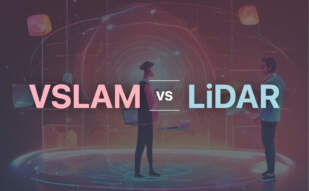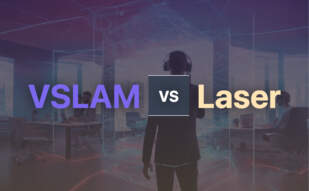When selecting between VSLAM and SLAM, the choice heavily leans towards the application intensity. VSLAM, with its image-centric approach, is ideal for landmark identification and practical applications like home robots and self-driving cars. However, for precise industrial applications and drone automation, SLAM excels with LiDAR technology and robust algorithms.

Key Differences Between VSLAM and SLAM
- VSLAM: Employed by home appliances and practical uses like vacuum robots, self-driving cars, and involves image processing.
- SLAM: Used in precision-demanding applications, industrial robots, drone automation, where LiDAR technology offers high-precision measurements.
- VSLAM: Complex applications in sensor signal processing, pose-graph optimization, with challenges in error accumulation.
- SLAM: Focuses on sensor data processing with high computational costs; solutions lie in parallel processing and optimization techniques.
| Comparison | VSLAM | SLAM |
|---|---|---|
| Methodology | Simultaneous localization and mapping with visual augmentation | Simultaneous localization and mapping |
| Usage | Autonomous vacuum cleaners, warehouse robots, last-mile delivery robots, industrial robots, entertainment, medicine, self-driving cars | Home robot vacuums, mobile robots in warehouses, self-driving cars, drones |
| Technology Components | Sensor signal processing, pose-graph optimization | Sensor signal processing, pose-graph optimization |
| Challenges | Error accumulation in localization, localization failure, high computational costs | Localization errors can accumulate, High computational cost, loop closure problem |
| Interesting Fact | The Walt Disney Company holds a patent for a “Virtual World Simulator” operating on SLAM technology | CSIRO developed a robust SLAM algorithm for accurate 3D measurement and mapping |
| Feature Identification | Lidar often used, influenced by range measurement devices and data extraction | Uses features from surroundings, Camera-based SLAM uses computer vision algorithms SIFT or ORB, Lidar-based SLAM uses depth and geometry info |
What Is VSLAM and Who’s It For?
VSLAM is a simultaneous localization and mapping (SLAM) method primarily utilized in autonomous vehicles. It processes mapping and localizing concurrently, aided by a plethora of algorithms. Beneficial in practical implementations like home robot vacuums and self-driving cars, this technology employs two types of components: sensor signal processing for the front-end, and pose-graph optimization for the backend.
VSLAM is perfect for companies delving into advanced industrial autonomous robots, entertainment, medicine, cleaning robots, and self-driving cars. With worldwide shipments of AGVs/AMRs surpassing 100,000, yielding $2.9B in 2021, the industry is on the brink to skyrocket to $18B by 2027, thanks to advancements in lidar and edge computing.
Pros of VSLAM
- Applied across sectors with varying benefits according to use.
- Deployed in medical field for surgeries and explorations.
- Potent in autonomous vehicle lane identification, traffic signals, and vehicle spotting.
Cons of VSLAM
- Challenges in error accumulation in localization.
- High image and point cloud processing computational costs.
- Difficulties in static and dynamic environment mapping, multi-robot instances, and clean mapping.
What Is SLAM and Who’s It For?
SLAM, an acronym for simultaneous localization and mapping, is an innovative method employed for autonomous vehicles to build a map and localize the vehicle in real time. Meticulously processing vast data amounts from sensors like cameras and laser range finders, SLAM enables comprehensive obstacle mapping. Owing to enhancements in computer processing speed and low-cost sensor availability, SLAM’s use is expanding.
From home robot vacuums, warehouse mobile robots, to drones in unfamiliar environments, SLAM is proving its mettle in several scenarios. Its components include sensor signal processing (front-end) and pose-graph optimization (backend). Companies and departments dealing with challenging terrain navigation and intricate space mapping can capitalize on SLAM’s capabilities.
Pros of SLAM
- Broad application range: home robots, warehouse robots, self-driving cars, drones.
- Improved with speedier computer processing and low-cost sensors.
- Visual SLAM and Lidar SLAM cater to diverse precision needs.
Cons of SLAM
- Localization errors can amplify, resulting in significant deviation from actual values.
- High computational cost for image processing and optimization.
- Complexity in selecting suitable SLAM algorithm depending on output, environmental conditions, use case.
Code Examples for VSLAM & SLAM
VSLAM: Simple Object Tracking
Here’s a simple example of Visual Simultaneous Localization and Mapping (VSLAM) for tracking an object using OpenCV. Ensure that OpenCV 4.5.0 or above is installed before running the code.
import cv2
tracker = cv2.TrackerCSRT_create()
video = cv2.VideoCapture("test.mp4")
_, frame = video.read()
bbox = cv2.selectROI("Tracking", frame, False)
tracker.init(frame, bbox)
while True:
success, img = video.read()
success, bbox = tracker.update(img)
if success:
x, y, w, h = int(bbox[0]), int(bbox[1]), int(bbox[2]), int(bbox[3])
cv2.rectangle(img, (x, y), ((x + w), (y + h)), (255, 0, 255), 3, 3)
else:
cv2.putText(img, "Lost", (100, 75), cv2.FONT_HERSHEY_SIMPLEX, 0.7, (0, 0, 255), 2)
cv2.imshow("Tracking", img)
if cv2.waitKey(1) & 0xff == ord('q')
break
SLAM: Basic 2D Pose Graph Optimization
Let’s look at a code snippet demonstrating basic 2D pose graph optimization using g2o (a general framework for graph optimization), a common library used in SLAM. Ensure you have g2o installed on your system.
#include "g2o/core/sparse_optimizer.h"
#include "g2o/core/block_solver.h"
#include "g2o/solvers/pcg/linear_solver_pcg.h"
#include "g2o/types/slam2d/types_slam2d.h"
int main() {
g2o::SparseOptimizer optimizer;
std::unique_ptr<g2o::BlockSolverX::LinearSolverType> linearSolver =
g2o::make_unique<g2o::LinearSolverPCG<g2o::BlockSolverX::PoseMatrixType>>();
g2o::OptimizationAlgorithmGaussNewton* solver =
new g2o::OptimizationAlgorithmGaussNewton(g2o::make_unique<g2o::BlockSolverX>(std::move(linearSolver)));
optimizer.setAlgorithm(solver);
// Add nodes and edges to the graph...
optimizer.initializeOptimization();
optimizer.optimize(100);
// Retrieve optimized pose graph...
return 0;
}
The Final Showdown: VSLAM vs SLAM – A Verdict
Both VSLAM and SLAM have carved their niches in the world of autonomous vehicles and its associated technology. Now, let’s nail the verdict down to resonate with specific audience segments.
Developers of Home Robot Vacuums and Self-driving Cars
VSLAM should be your go-to choice. Its robust blend of mapping and localizing augmented by varying algorithms ensures efficient functionality for your systems. Given its efficacy in identifying landmarks and mapping through monocular SLAM, even with a single camera, it’s well-suited to home robots and self-driving vehicles.
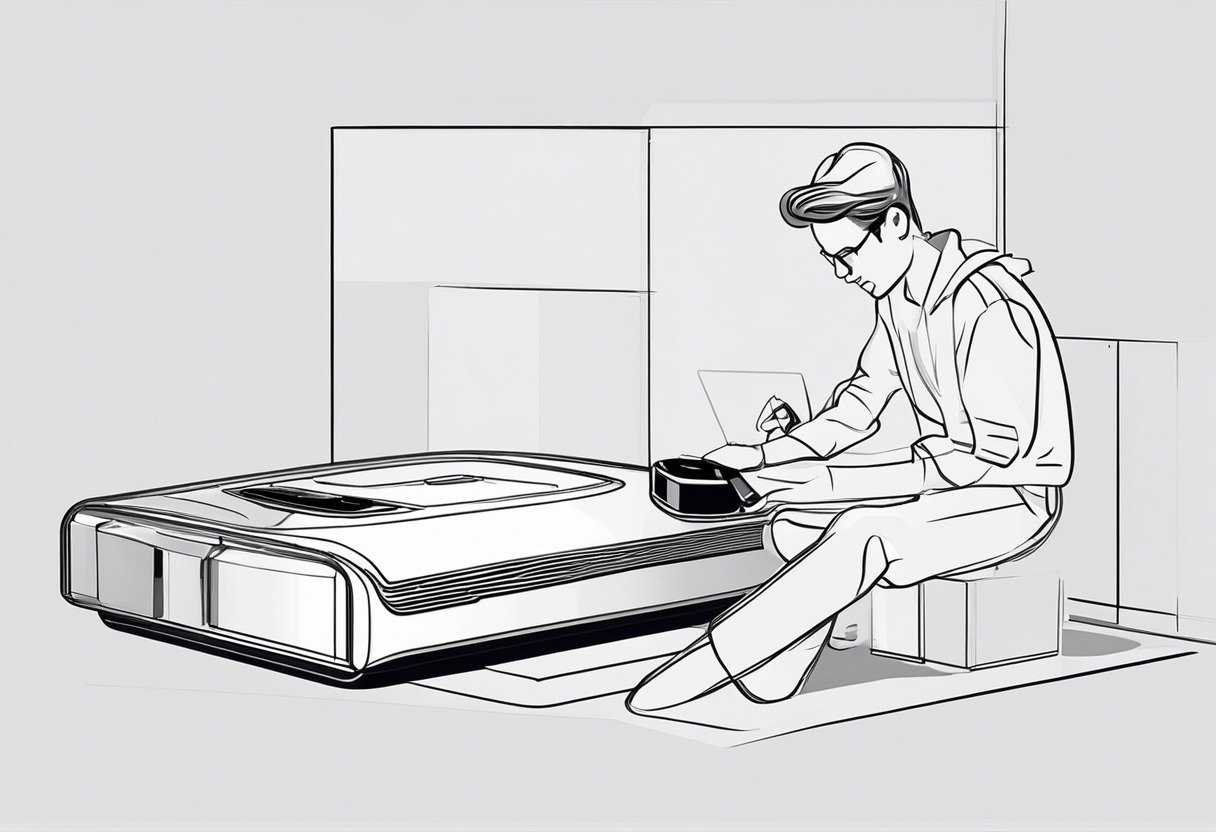
Robotic Applications for Warehousing & Last-mile Deliveries
Audit the compute-intensive and flexible VSLAM. Explicitly adapted to robotics, this technology can dynamically map varying warehouse scenarios and last-mile delivery routes to implement efficient robotic work. Don’t forget: AGVs and AMRs are generating substantial revenues in this sector!
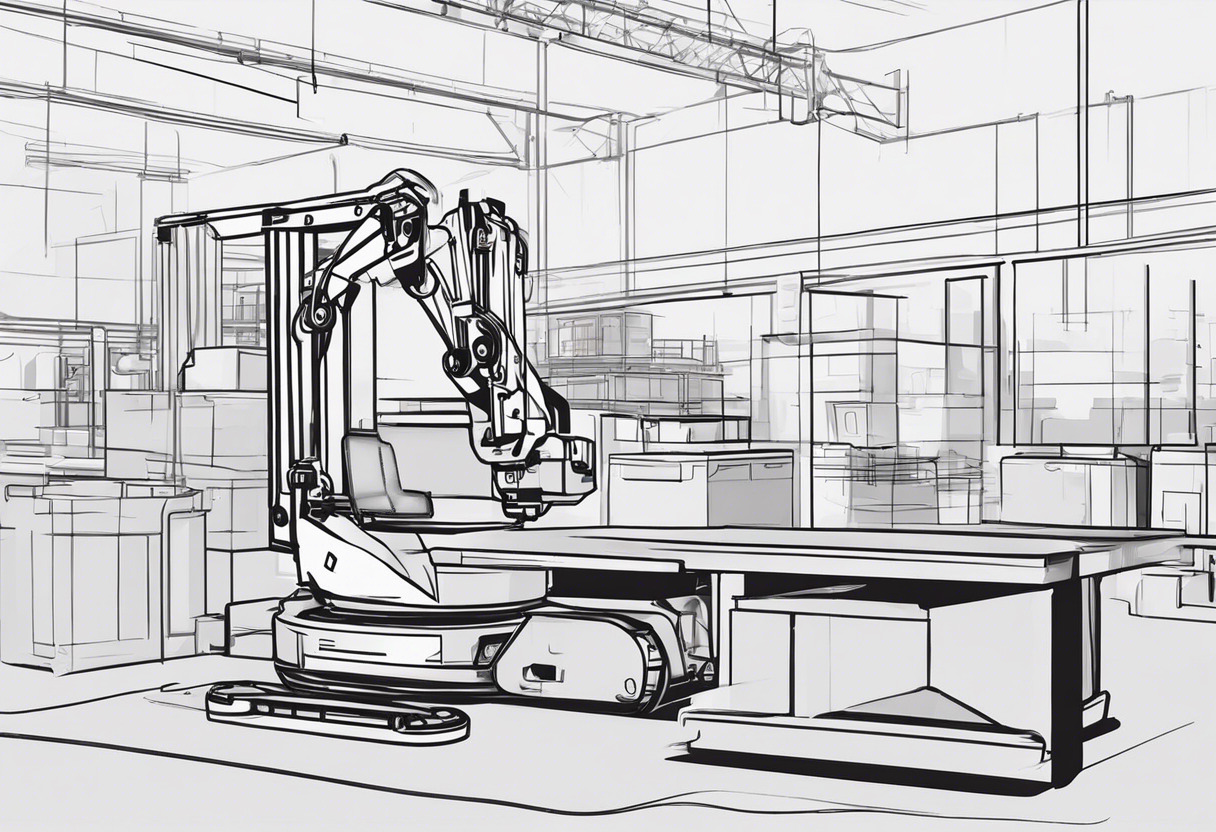
Medical Field and Drone Automation
When precision matters, apply SLAM. With its ability to utilize laser sensors for accurate measurements, it’s perfect for surgical settings as well as drone automation. SLAM’s map-building capability and error reduction techniques are vital in these fields.
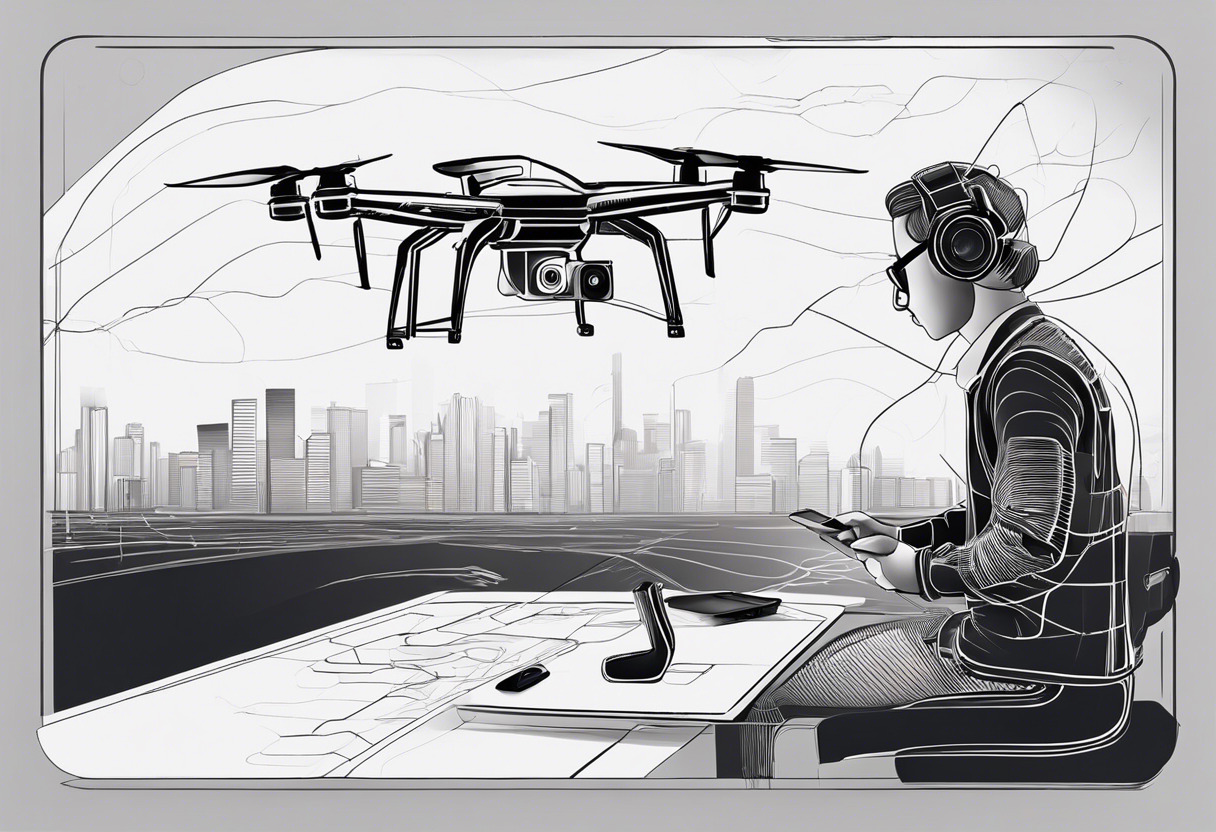
Industrial Autonomous Robots and Self-driving Excavators
Choosing between SLAM and VSLAM? Dive-in with SLAM. Applications like forklifts and excavators require edge-based strategies. GeoSLAM’s SLAM method allows for real-time mapping and feedback, reducing set-up times and boosting efficiency.
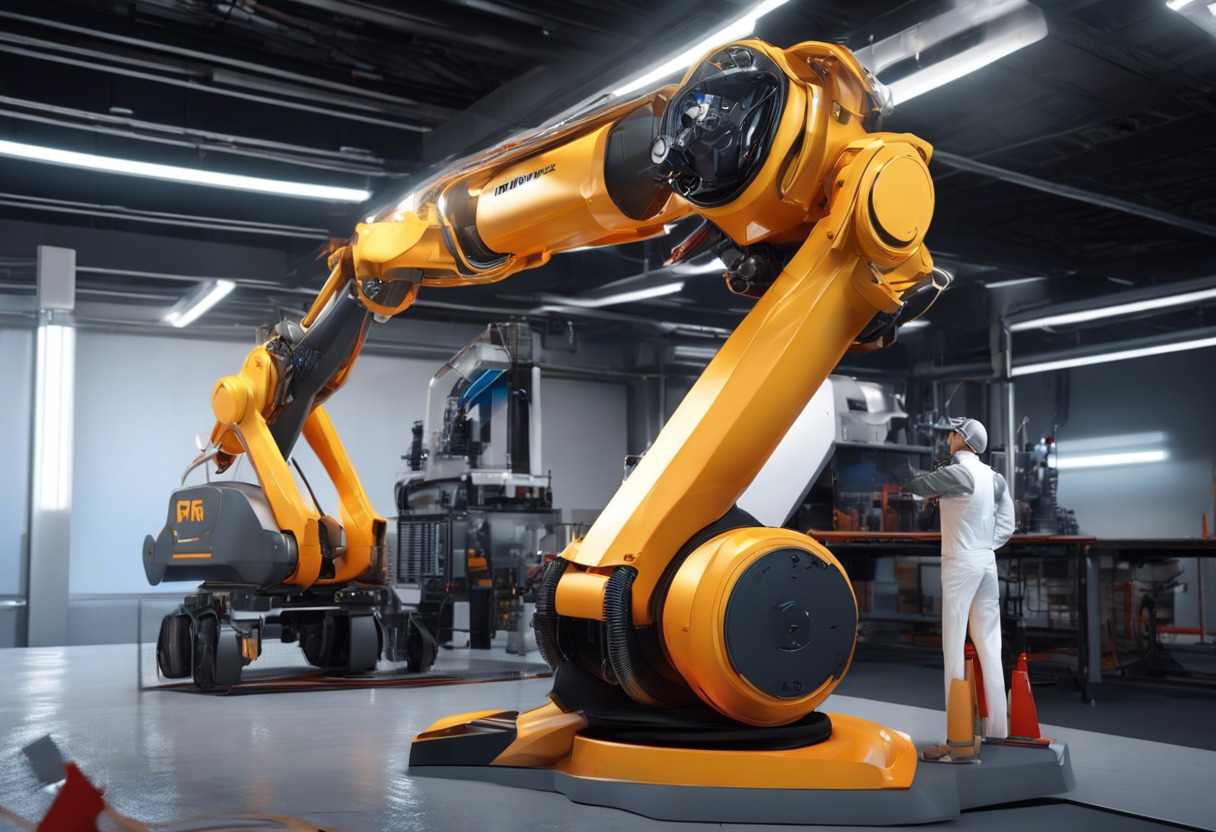
In the face-off between VSLAM and SLAM, the former commands a lead in applications that require dynamic mapping and landmark identification like home robots and autonomous vehicles while the latter’s precision in measurements wins in medical and precision-heavy fields. What you choose hangs on your specific needs and realm of operation.
Tiffany Brise
Content writer @ Aircada, patiently awaiting a consumer AR headset that doesn’t suck.



